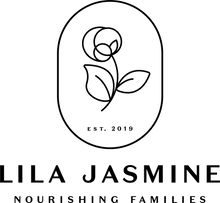What is a milk bleb + how to treat it

I have a personal experience with these and therefore feel it's my duty that you know what they are too and how to treat them. A milk bleb, or blocked nipple pore, is also referred to as a nipple blister - this occurs when a tiny bit of skin overgrows a milk duct opening and solidified milk backs up behind it - boy do they hurt!
A milk bleb manifests as a painful white dot on the nipple or areola, and the pain tends to be focused at that spot and just behind it peaking during a feed. The frustrating thing about milk blisters is that they're persistent, often coming back again and again and again.
The recommend treatment is made up of 3 steps;
- Apply moist heat prior to feeding
- Clear the skin from the milk duct
- Lecithin supplements
Apply moist heat to soften the blister prior to nursing
An epsom-salt soak before breastfeeding can help to open the milk duct opening, use a solution of 2 tsp of epsom salts to 1 cup water. The epsom salt is first dissolved in a small amount of very hot water, then further water is added to cool it down enough to soak in
Immediately after the soak and prior to nursing place an extremely hot wet compress on the milk blister, be careful not to burn yourself
Clear the skin from the milk duct
This step isn't always necessary after the combination of heat and nursing - quite often that is enough to cause the blister to open and for the solidified milk to be released but if it isn't;
- Rub the blister area with a moist washcloth or gently pull on it with a clean finger nail or clean tweezers.
- As a last resort a sterile needle may also be used to open the blister. It's pretty daunting brining a needle to your own nipple so I would ask that your health care provider or steady-handed partner does this for you. Use a lifting action, at the edge of the bleb, rather than a piercing action. Don’t push into the blister as it can push bacteria deeper into the nipple.
Lecithin supplements
According to Dr Jack Newman “Lecithin may help with blocked ducts by decreasing its viscosity [stickiness] of the breast milk by increasing the percentage of polyunsaturated fatty acids in the milk”. If you find that you're experiencing reoccurring milk blebs then 1200mg Lecithin supplements could be helpful for you
- 1 capsule, 3-4 times a day
- After 1-2 weeks without a milk bleb reduce to 1 capsule for a further 1-2 weeks
Photo credit: one of our most loyal customers Rachel McIntyre captured by Black Robin Photography
